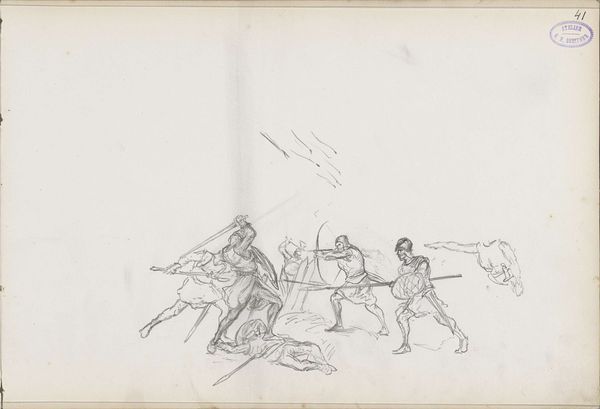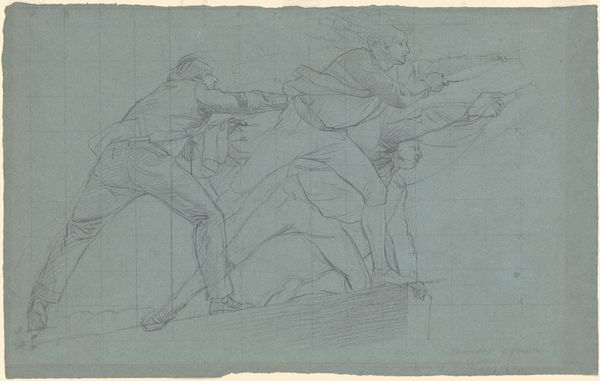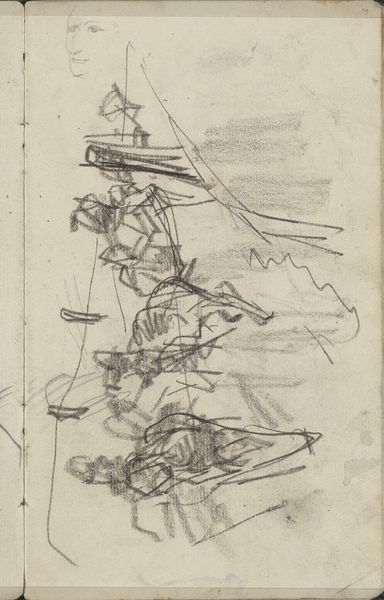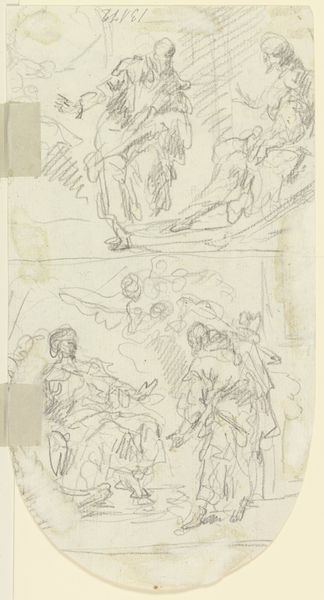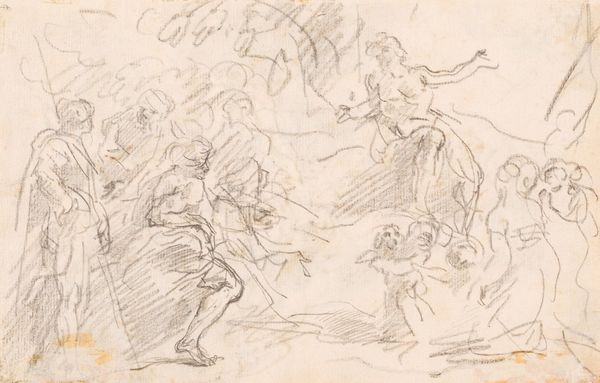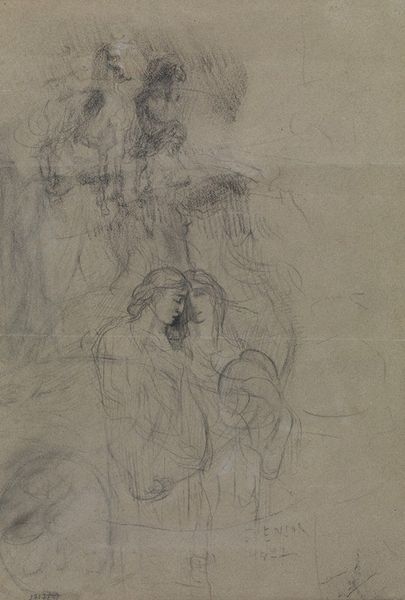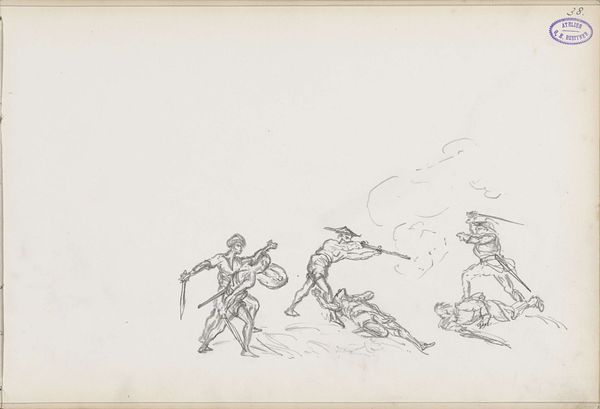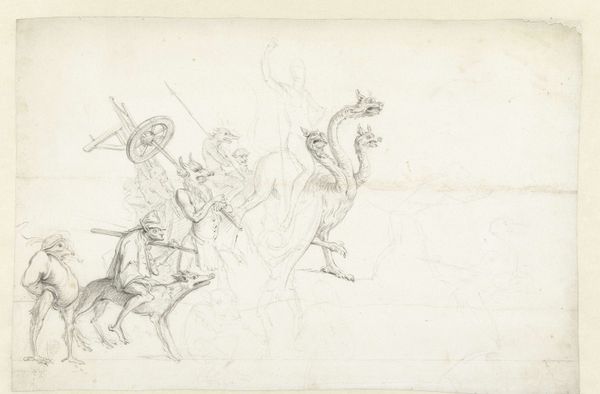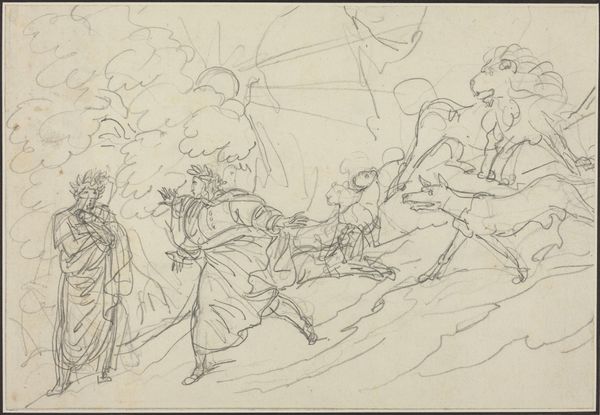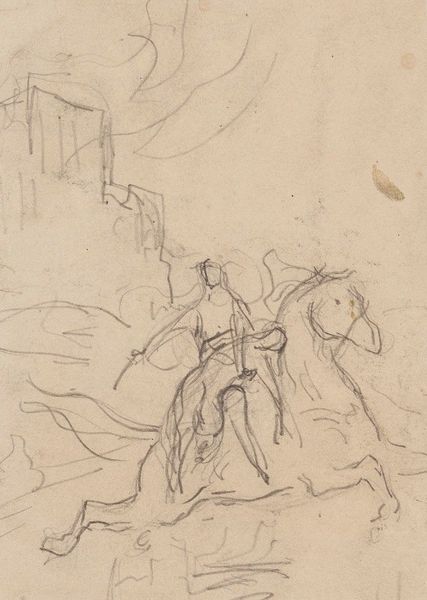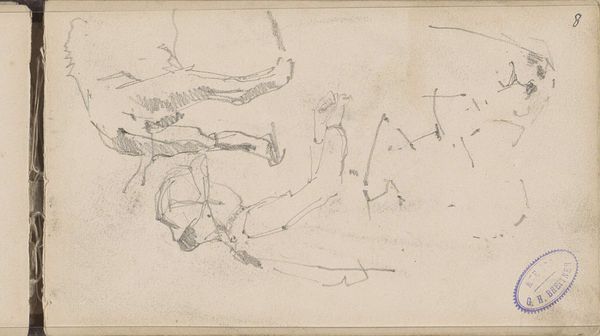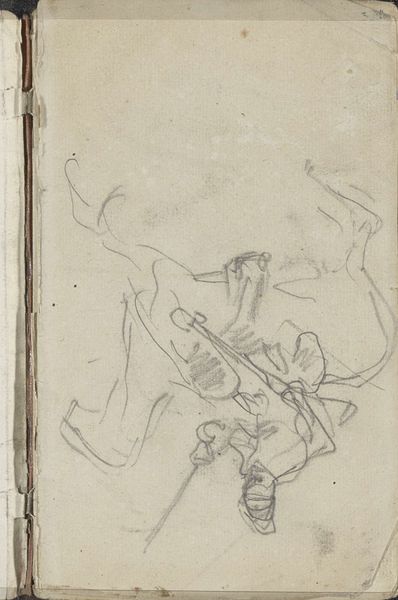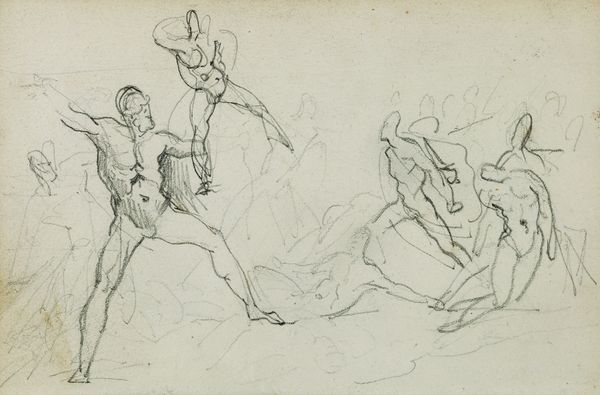
drawing, paper, pencil
#
drawing
#
baroque
#
figuration
#
paper
#
pencil
Dimensions: height 248 mm, width 140 mm
Copyright: Rijks Museum: Open Domain
Curator: Here we have "Fragment van een studie met twee putti" by Dionys van Nijmegen, a drawing in pencil on paper dating back to sometime between 1715 and 1798. What strikes you first about this work? Editor: The immediacy of the sketch! It feels incredibly spontaneous. The starkness of the pencil lines on paper draws my eye to the very essence of form and movement, bypassing any illusion of depth. Curator: Absolutely. The putti, or cherubic figures, themselves are heavily symbolic. Often, they represented divine love, innocent souls, even acting as intermediaries between the celestial and earthly realms. Given that this is a study, it almost hints at the preliminary stages of designing some form of ornate decoration. Editor: Right. Semiotically, in this drawing, the sketch lines could represent either the beginning of structure and meaning or the meaning collapsing into formlessness; it teeters between order and chaos. What do you read into their interaction? Is there an intended relationship between these figures? Curator: Considering the period, it would be normal to depict cherubs in idyllic and harmonious settings. Their postures suggest either a game or a struggle; that duality perhaps illustrates a range of emotions within what's expected. It asks, what are they symbolizing beyond the expected innocence? What are they wrestling with? Editor: That’s astute. The formal arrangement doesn't clarify any of that. The way their forms are drawn, almost overlapping and incomplete, disrupts any easy narrative reading. I mean, look at the planes and intersecting lines--they create an exciting tension! It keeps our understanding in flux. Curator: True! In baroque art, such unresolved tensions reflect a broader understanding of life. There is so much focus on drama, strong emotions, and inherent theatricality to communicate the mysteries of faith, life and experience. Even a fragment can evoke this complexity. Editor: It certainly succeeds in that. The lack of a complete, polished image forces one to acknowledge the process itself. We see art-making raw and exposed. Curator: Looking at the original image is truly fascinating when you remember how much significance these seemingly innocuous cherubs have had throughout our cultural heritage. Editor: And through the careful positioning of strokes, we can truly understand how van Nijmegen constructed his studies. Very illuminating indeed!
Comments
No comments
Be the first to comment and join the conversation on the ultimate creative platform.
